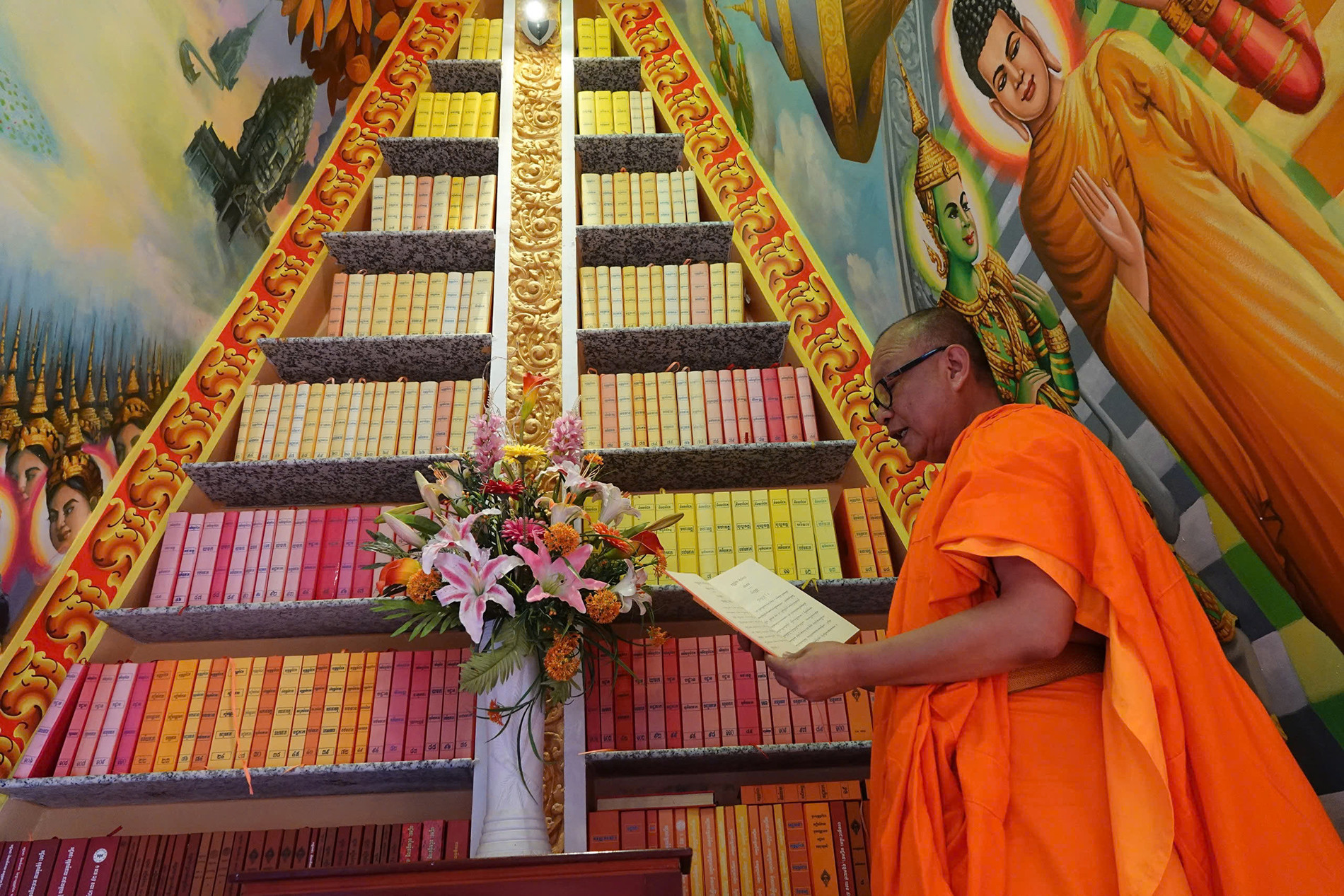
Pitu Khosa Rangsay is regarded as Can Tho’s most beautiful temple. It houses an "invaluable treasure"—a collection of ancient books hundreds of years old.
The abbot, Venerable Ly Hung, has collected over 4,000 books, including 30 ancient ones, centuries old, written in Pali and ancient Khmer languages on leaves, especially ‘buong’ leaves (Corypha umbraculifera).
Buong leaf is Khmer’s precious paper. The Khmer choose buong leaf for writing paper because it is tough, durable, yields clear script lines, and resists decay.
The Venerable Hung said that since the temple’s founding in 1948, there had been many books and manuscripts over 100 years old found, documenting customs, rituals, and lessons for descendants. These leaf-written books cover various topics, from rites and ceremonies to their meanings.
The temple also holds numerous Tripitaka sets—scriptures, laws, and treatises—helping monks study the Buddha’s teachings.
The ancient books on leaves are mainly in Pali and ancient Khmer. Monks ordained in the last 20 years or so cannot access this old language.
Most books were preserved by temple managers and Buddhists across generations, and later offered to the temple for safekeeping.
The Venerable Hung explained that normal leaf books differ from buong-leaf manuscripts. These ancient texts are made from straw, pressed into volumes 15-20cm wide and 60cm long. They’re arranged with Pali on one side, Khmer on the other, written with steel pens, beautifully crafted. The oldest book there dates back over 100 years.
Also according to Venerable Ly Hung, once, a fire broke out in the ancient bookcase in Khosa Rangsay Pagoda, and many items were burned. Many items burned to ashes, yet the ancient books only had their wooden covers singed—the inner leaves stayed untouched.
This stunned the monks, who saw it as miraculous. Since then, the book collection has been deemed a treasure that everyone has to protect.
Pitu Khosa Rangsay also preserves Khmer culture, including the five-tone musical ensemble, Chhay-dam dances, and Cambodian folk dances, performed at key festivals like the Chol Chnam Thmay New Year, Ooc Om Boc, and Sene Dolta.
The Venerable monk
Ly Hung is widely known for his compassion. He built two dormitories in the temple to house and feed poor students attending universities and colleges in Can Tho for free.
Since 1996, with his guidance and support, over 1,000 students have graduated, achieved success, and built careers. Many have become directors, earned master’s or doctoral degrees, or studied abroad.
Born and raised in Can Tho, Ly Hung endured a tough childhood, scavenging bottles, catching crabs, and snails to afford schoolbooks. With unwavering faith and effort, he overcame hardship, driven by a dream to establish his position in life and help others.
At 14, he became a monk at Sanvor Pothinhen Temple (O Mon District in Can Tho). He holds that "faith" is "life," and "life" is "faith"—they go hand in hand. A monk must learn faith to refine life, living to "benefit life, honor faith."
During his monastic years, Ly Hung devoted himself to study. Now he is a Doctor of Religious Studies, speaking Khmer, English, Chinese, and Pali.
"Having endured poverty and worked hard for an education, I studied tirelessly to gain knowledge and skills to help others," he shares.
Understanding the struggles of Khmer students pursuing higher education in Can Tho, he began aiding them in 1996.
"At first, due to limited means, the temple just could help a few students. Later, I raised funds to support dozens, sometimes up to 60 at once. They live here free of charge, with electricity, water, food, and daily needs covered. For the poorest, we give scholarships during festivals. Those without bikes get bicycles to ride to school. They’re like family here. Parents are thrilled to see their kids supported, easing their burdens," Ly Hung said.
He added that the temple welcomes students, providing food and lodging to help them chase their dreams. But entrants need family consent for proper guidance, and those with poor morals aren’t accepted.
While living there, students learn Khmer rites, customs, lifestyles, and culture.
"Young Khmer men, when grown, must ordain to honor their parents—some for a few years, others for life. But these students pursue higher education instead. So, we teach them our people’s traditions, rituals, and ways," he explained.
Most students here graduated successfully, securing stable jobs.
Hoai Thanh